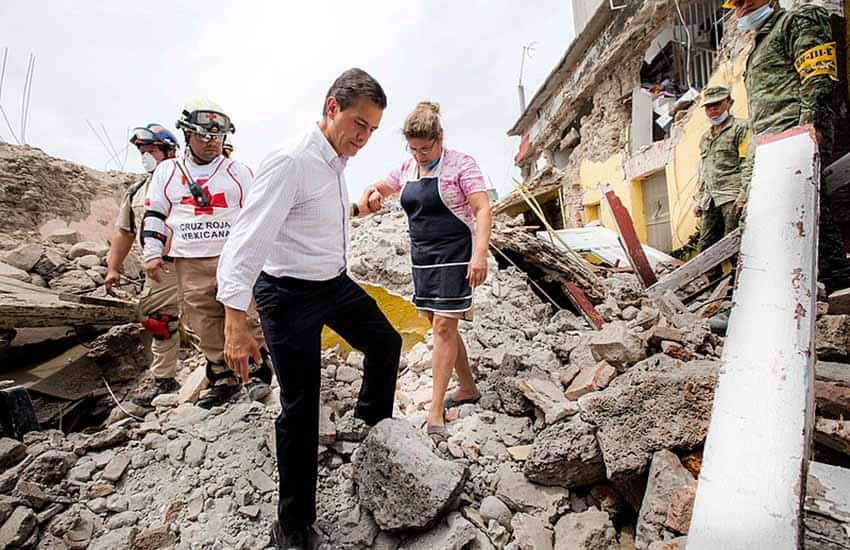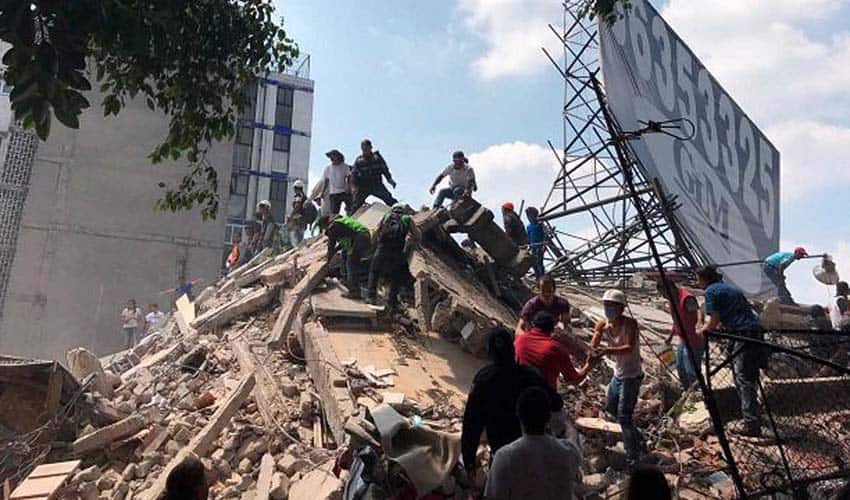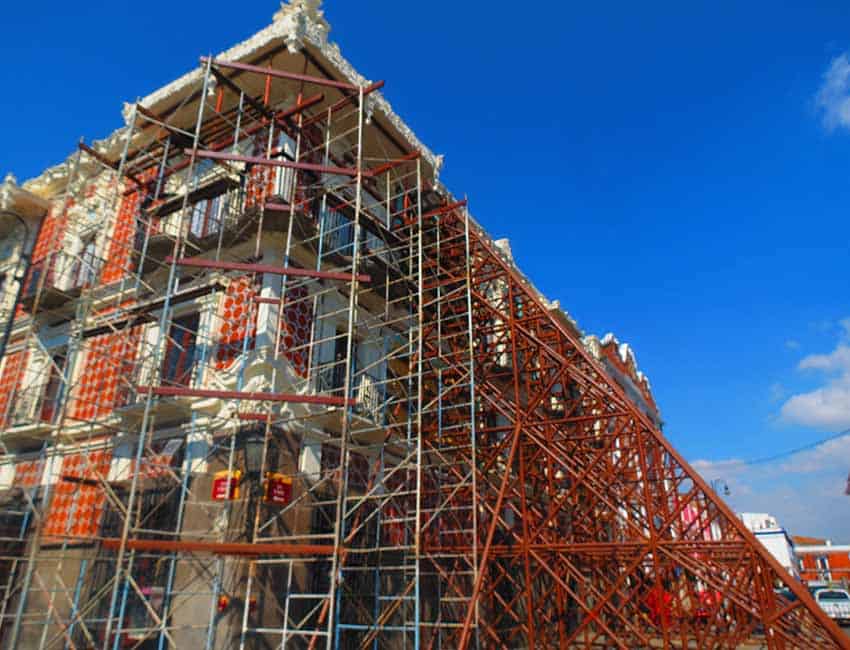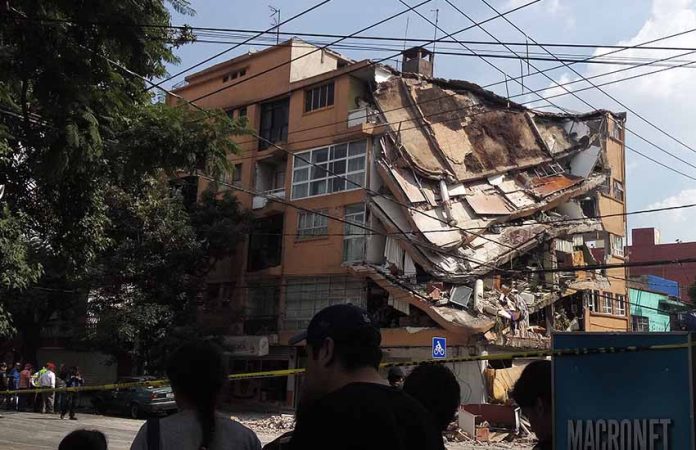No stranger to dark humor, Mexico City residents have dubbed September as “earthquake season” because three of the most recent destructive earthquakes have occurred during this month. This article is about one of them.
My first experience with tremors in the nation’s capital was having my closet doors rattle in the middle of the night. I had to ask in the morning if there had been an earthquake. With a positive answer, I dismissed earthquakes as no big deal.
Idiot.
There had been a few good rattles in the years (and even weeks) before, but nothing like S19 — how the Puebla-centered earthquake in 2017 is called here in Mexico City. For those of you not here at the time, it was the strongest earthquake to hit Mexico City, Puebla and Morelos since the infamous 1985 temblor.

Ironically, these two earthquakes came 32 years apart, almost to the hour. My husband Alex experienced both and says that they felt equally strong to him. S19 was “only” a 7.1 compared to 1985’s 8.0, but the epicenter was much closer to Mexico City. Fortunately, S19 did not do nearly as much damage as 1985 in the capital because of improvements in building codes, but it caused significant destruction and death.
Previous minor rumbles do not prepare you for ones like these. Monica Rix Paxson was living in Cuernavaca, Morelos, at the time, and when the quake started “… we were having drinks, and when things started shaking, we grabbed the bottle and continued the libations outside.”
In earthquakes like this, the ground, walls and ceiling shake and/or move in waves, shattering perceptions of safety and permanence. After S19, buildings that only moments before were homes and workplaces looked like bombs had hit them.
You cannot experience a quake of that magnitude and not be affected by it. In the five years since, everyone who experienced S19 has vivid memories. The folks I interviewed all mentioned that the shaking seemed to go on forever.

Obviously, many Mexicans were affected by the event, but foreigners were also caught up in it, especially in Mexico City where people from Spain, Panama, Paraguay, Colombia, Guatemala, China and France died. The neighborhoods of Roma and Condesa, where many foreigners live, were hit hard.
Interestingly, Mexican accounts from the days after talk about foreigners participating in the many community-led efforts in rescuing people, collecting food and other supplies and getting accurate news out in English and other languages. Bloggers like Oaxaca-based Shannon Sheppard and other writers described their experiences and appealed for help for those affected, even if the topic was far from their usual niche. Their efforts not only benefited Mexico City but all the affected states.
S19 did not devastate the economies of those neighborhoods nor those of Mexico City’s historic center like the 1985 earthquake did. Most of us who escaped with minimal consequences realize the bullets we dodged as we heard about those less fortunate. Those bullets ranged from the widely reported deaths of dozens of children at Colegio Enrique Rébsamen to the death of my friend’s dog, who was painfully killed after a hive of agitated Africanized bees found him.
The choice afterward is whether to stay or leave.

Those who lose their homes don’t have much choice, at least not immediately. In hard-hit areas, many residential and other buildings are still not repaired or rebuilt today since few people have earthquake insurance (it’s expensive) and often government-backed mortgages are simply forgiven instead of providing the mortgage holders with money to rebuild.
Those who stay often do so because of community. They both help and receive help.
Melissa Ferrin was at her son’s school in Oaxaca when the earthquake struck, helping teachers get students out and keeping them calm. Paxson notes that when her local fonda (family restaurant) reopened weeks later, throngs of people came to eat as a sign of support.
Others find that they can no longer live in a place that shakes, especially with aftershocks that bring up the initial trauma for weeks, months and even years afterward. Says Sheppard, “You never get used to it. You never take it in stride since you never know when that stride will be broken as the ground begins shifting beneath your feet.”

Some foreigners just simply decide to leave Mexico altogether, such as graphic artist Warren Crawford, who returned to England. As much as he loves Mexico, the post-earthquake anxiety was too much. Others just go somewhere a little more solid. Well-known food blogger Cristina Potters decided to return to her traditional base of Morelia, Michoacán, which shakes, but nowhere as much as Mexico City.
Yes, I was living in Mexico City on September 19, 2017. I’m still here, but my life is quite different than it was five years ago.
On that day, I was working as a teacher at the Tec de Monterrey school. Well, at that moment, I was actually “playing hooky” at the Costco across the street. Lucky for me. I remember waves under my feet, stuff flying off the shelves and Costco parking lot lights swaying, but, oddly, not noise.
There had to have been a roar, of course. The pedestrian bridges linking three classroom buildings almost right next to me collapsed completely, and five students died among their ruins. The campus was devastated.
It took three to four hours for my husband to get to me from his work, only a few kilometers away. Then we started another hours-long trek for home, not knowing if it would be there. Miraculously, my building took everything like a trooper despite being close to damage-prone Roma and Centro; all animals accounted for and only a few things were broken.
The consequences came months after. There was no way to rebuild the entire Tec de Monterrey campus and keep everyone on, even with Mexico’s employee-favoring labor laws. It took eight to nine months, but I was let go.
But it worked out for the best: my severance paid off my mortgage, my book got published and I now write for Mexico News Daily.
Leigh Thelmadatter arrived in Mexico 18 years ago and fell in love with the land and the culture in particular its handcrafts and art. She is the author of Mexican Cartonería: Paper, Paste and Fiesta (Schiffer 2019). Her culture column appears regularly on Mexico News Daily.
